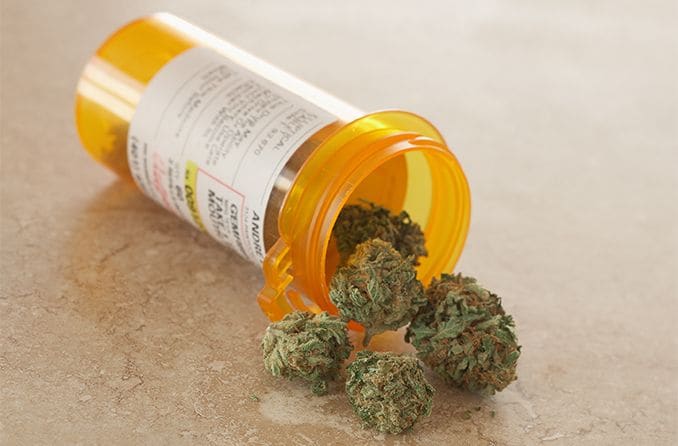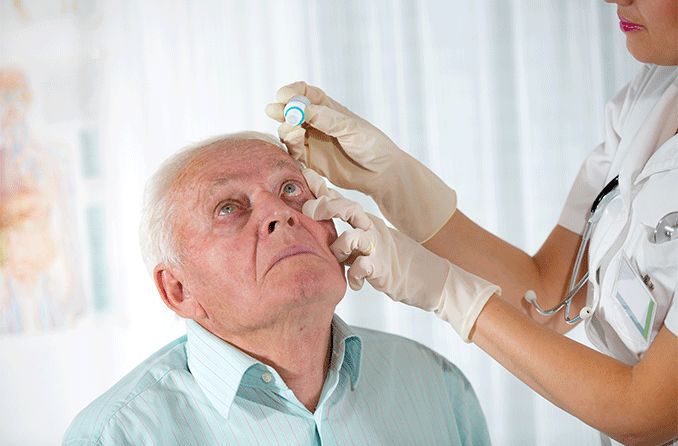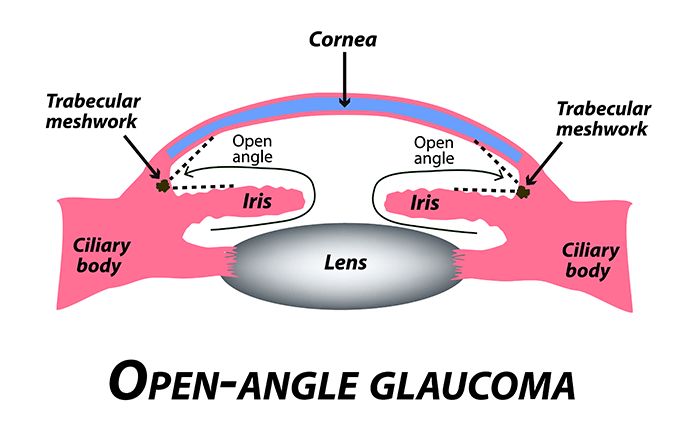While there are some temporary benefits of marijuana for glaucoma sufferers, the risks far outweigh the rewards. We get it. Buzzkill.
Here’s the deal: The scientists who have studied the links between marijuana, cannabis and glaucoma have figured out that getting high on weed can help with glaucoma for a few hours. But you’d have to stay that way around the clock to fully enjoy the benefits, making the side effects worse than the treatment.
This may seem like bummer news as more states legalize marijuana sales and consumption (medical and recreational). The stigma around marijuana use is finally fading and the paranoia about getting busted is receding with the rise of legalization. But none of these social gains change the facts: The benefits of using weed for glaucoma are mostly a myth. Let’s check out why.
The basics of glaucoma and marijuana
Glaucoma is a disease most often associated with excess pressure on the optic nerve inside the eye. Over time, this pressure can damage peripheral vision and eventually lead to blindness.
One way eye doctors detect glaucoma is by measuring your intraocular pressure (IOP). The higher the IOP, the greater a person’s risk for developing glaucoma. Generally, glaucoma is considered a silent disease because it often progresses without pain or symptoms until noticeable, irreversible vision loss has occurred. However, in some cases, symptoms can include:
- Seeing halos around lights
- Eye pain and redness
- Nausea and vomiting
- Blurry vision
By measuring IOP during a routine eye exam, eye doctors can find early warning signs of glaucoma, including issues with the level of fluid in the eyes, and start treatment as early as possible. Accepted current glaucoma treatments include pressure-reducing eye drops and surgery if medications do not help.
In the 1970s, social use of marijuana became much more common, and people with glaucoma noticed that their symptoms seemed to ease when they smoked weed.
Scientists who looked into these reports confirmed that smoking marijuana can reduce high IOP and the symptoms it causes. Alas, it only helps for three to four hours at a time, and glaucoma keeps pressure on the optic nerve all the time.
To prevent irreversible loss of eyesight, glaucoma treatments must reduce this pressure constantly — not just for a few hours.
Treating glaucoma with marijuana
For decades, society has persecuted people for enjoying the simple pleasure of a marijuana high. The seeming hypocrisy of allowing alcohol while forbidding pot was maddening to many. Plus, those who had glaucoma got a measure of relief from smoking weed. So where’s the harm?
Well, think about the consequences of smoking enough weed every day to help with your glaucoma:
- Buying all that weed would break your bank.
- Testing positive for marijuana could get you fired or prevent you from getting hired, depending on your employer’s drug-testing guidelines.
- Driving or operating machinery is out of the question.
- Staying stoned makes it hard to concentrate on work, relationships, and everyday responsibilities.
- Smoking any substance in any quantity is bad for your health, especially your lungs.
- Losing your inhibitions can lead to things like unsafe sex and other risky behavior.
It might be worth enduring all these side effects if there were no other treatment options on the table, but that’s not the case. Longer-lasting medical and surgical treatments are available to relieve glaucoma symptoms and protect your eyesight. Talk to your eye doctor to find out what is most likely to work best for you.
DO YOU HAVE GLAUCOMA? Find an eye doctor near you and discuss your treatment options.
Treating glaucoma with CBD
THC, or tetrahydrocannabinol, is a compound in marijuana plants that causes weed’s well-known high. A similar compound is cannabidiol (CBD), which can be extracted from either a hemp plant or a marijuana plant (which is hemp with a higher concentration of THC).
While CBD has no psychoactive effects, it does seem to have some health benefits: Researchers believe CBD can help with epilepsy, pain, anxiety, and other serious health issues. Marijuana is also thought to help with these conditions, but the buzz is a deal-breaker for many people. That’s why CBD supplements in oils, gummies, and other products have become so popular.
So, If CBD can help people without the psychoactive effects of THC, shouldn’t it produce the same benefits for glaucoma without the downsides?
Not exactly. Remember that eye drops are one of the main treatments for glaucoma, and, unfortunately, CBD and water don’t mix. Eye drops using CBD oil have been tested on rats and found to actually increase eye pressure by up to 18%.
Treating glaucoma with marijuana and CBD
Here’s the conclusion of the American Academy of Ophthalmology (AAO):
“Cannabis and currently available compounds derived from marijuana – like CBD – are not an adequate treatment for glaucoma or any eye condition. To treat glaucoma, eye pressure must be managed 24 hours a day. Marijuana is not a practical treatment for constant use. And more research is still needed into the exact effects of cannabis and cannabis compounds on eye pressure and glaucoma.”
The AAO also put together an infographic explaining why doctors do not recommend marijuana for glaucoma treatment.
The Glaucoma Research Foundation highlights issues around safety and quality control:
“Concerns also exist regarding the long-term safety of marijuana use, due to its associations with permanent lung damage when smoked, and possible permanent adverse effects on cognition and mental health. With regular use, tolerance to the eye pressure-lowering effects develops, meaning that increasing drug levels would be required to prevent the progression of glaucoma. Finally, the lack of regulation and quality control makes the efficacy and safety of marijuana unpredictable. Research efforts to develop THC eye drops that can effectively lower eye pressure while minimizing side effects are underway but have not yet been successful.”
The best way to address glaucoma risk
The trouble with glaucoma is that it can slowly damage your optic nerves for years before you realize anything is wrong. If you wait too long, the damage can be permanent. That’s just one reason routine eye exams are so important.
Most exams include a basic eye pressure check to screen for signs of glaucoma. If any concerning results come back, more in-depth and conclusive testing should take place.
An ophthalmologist who specializes in eye disease and surgery can help you make the best decisions after a glaucoma diagnosis. That may mean eye drops or even glaucoma surgery — but probably won't include a green light for lighting up.
WHEN WAS YOUR LAST EYE EXAM? Find an eye doctor near you and schedule an appointment.





